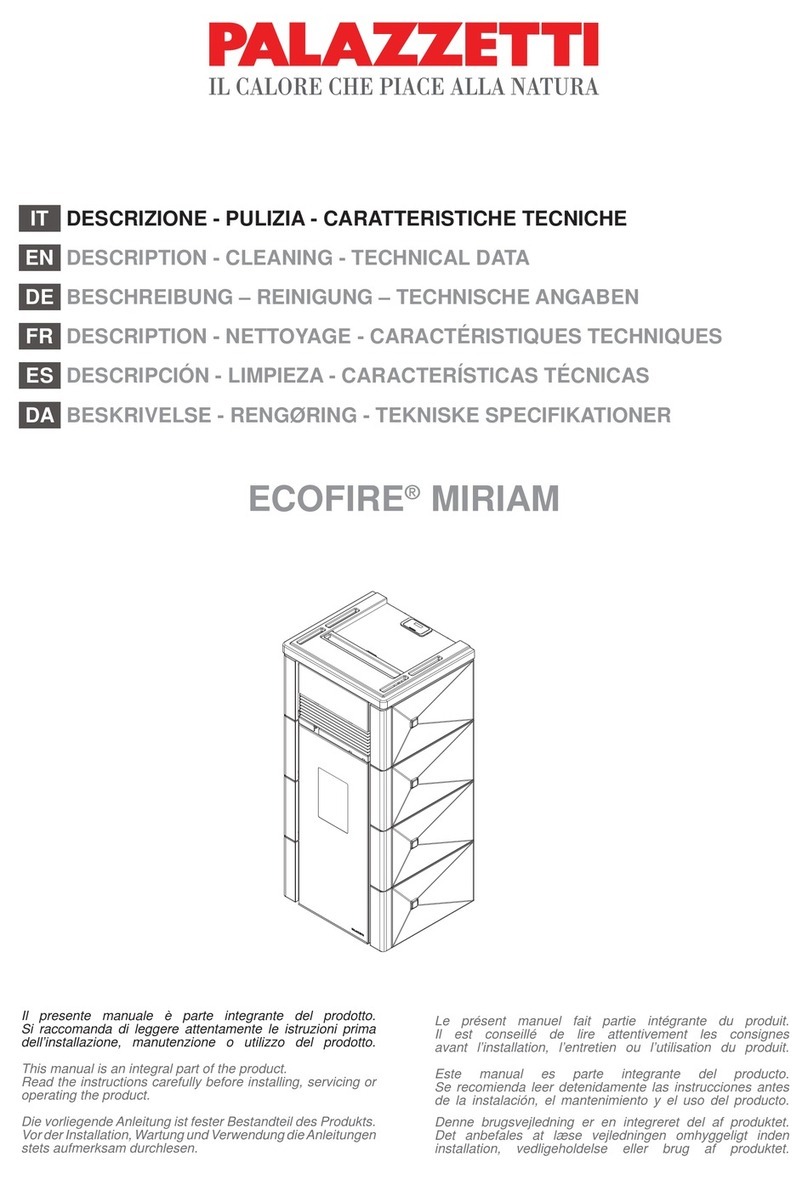Observing the prescriptions of the present manual is in the user’s favor and is one of
the warranty conditions.
Compliance with this instruction is in the interest of the consumer and one of the
warranty terms.
INSTRUCTIONS FOR SECURITY:
- This appliance is not intended for use by persons (including children) with limited physical,
sensory or mental abilities or lack of experience and knowledge. The installation must be
performed by a qualified expert in the field of heating installations or authorized by "Marelli
Systems' service. The place and way of connecting the stove should be selected carefully in
accord with the safety instructions. Install away from flammable objects!
- Before starting any operation, the user must read and fully understand the contents of this
instruction manual. Incorrect setup may cause hazardous conditions and / or incorrect function
of the stove;
- Do not wash the stove with water. Water can get inside the fireplace and damage the
electronics and cause an electric shock;
- Do not put clothes to dry on the stove. Any clothes hangers and other objects must be located
within a reasonable distance from the fireplace. Fire hazard;
- The user is fully responsible for the proper use of the product which exempts the company from
liability of any users errors or misbehaviour or omissions;
- Any intervention or replacement that is made by unauthorized persons or using non original
spare parts for the product can be risky for the user and release the company from all liability;
- Most surfaces of the stove are extremely hot (the door handle, glass, flue pipe, etc.). Avoid
contact with these parts before assuring yourself that you us temperature resistant gloves as
well as suitable temperature resistant instruments;
- Under no circumstances should the fire be ignited with the door open or broken glass;
- The product must be electrically connected to a system equipped with an effective earth
conductor. (Must be grounded);
- Turn off the stove in case of failure or malfunction;
- All unburned pellets in the burner after each unsuccessful attempt ignition must be removed
before a new ignition;
- When installing the product all fire safety requirements must be respected
- If there is a fire in the flue pipe, extinguish the stove, disconnect the power cord and never
open the door. Call competent authorized service technicians;
- Do not light the stove with flammable materials if the ignition system failed;
- Periodically check and clean the smoke outlet ducts of the stove (connection to the flue pipe);
- Pellet stove is not cooker;
- Always keep the cover closed;
Safe distances:
When installing the product a safe distance of at least 600 mm must be respected. This distance
applies to the product located near materials of B or C flammability level. The safe distance is
doubled if the product is close to materials of C3 combustion level.



























